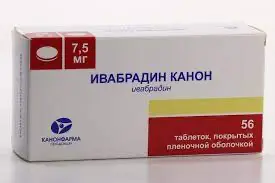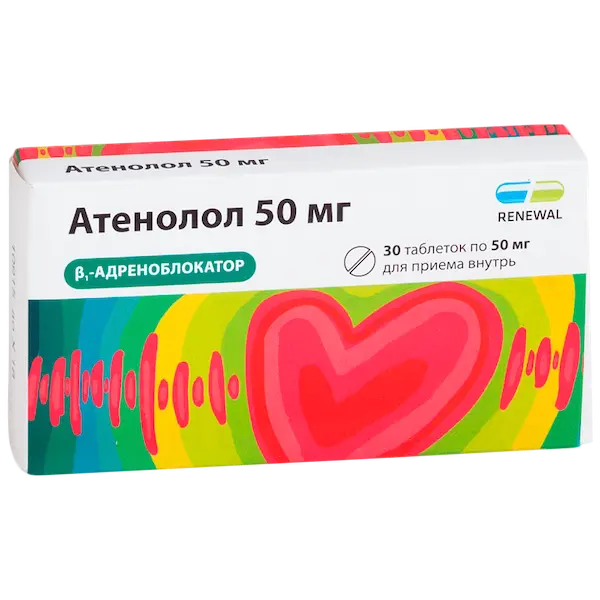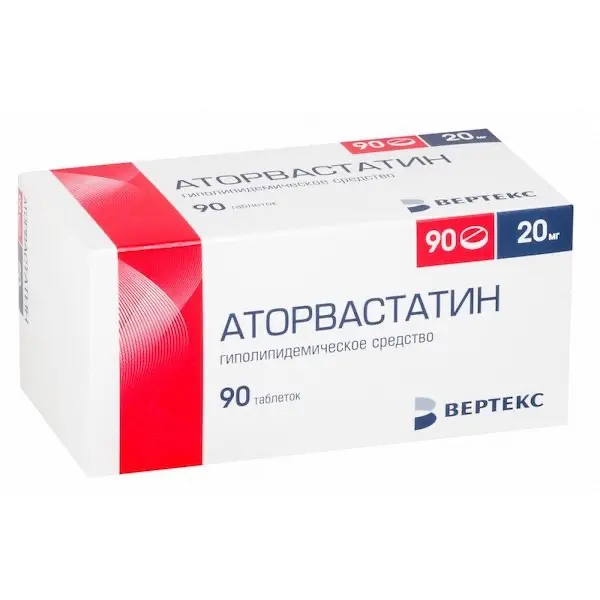Description
Ivabradine Canon Pharmacodynamics
Ivabradine is a heart rhythm slowing drug whose mechanism of action is selective and specific inhibition of the If channels of the sinus node, which control spontaneous diastolic depolarization in the sinus node and regulate heart rate (HR). Ivabradine has a selective effect on the sinus node without affecting the timing of impulse conduction along the intraatrial, atrial-ventricular and intraventricular conduction pathways, as well as myocardial contractility and ventricular repolarization.
Ivabradine can also interact with the retinal Ih-channels, similar to the heart’s If-channels, involved in the occurrence of temporary changes in the visual perception system by altering the retinal response to bright light stimuli.
Under provocative circumstances (e.g., rapid brightness change in the visual field), partial inhibition of the Ih-channels by ivabradine causes the phenomenon of changes in light perception (photopsia). Photopsia is characterized by a transient change in brightness in a limited area of the visual field (see section “Side effects”).
The main pharmacological feature of ivabradine is the ability of dose-dependent heart rate slowing. Analysis of correlation between the rate of heart rate slowdown and the drug dose was performed with gradual increase of ivabradine dose up to 20 mg twice a day and showed a tendency to achieve the plateau effect (no increase of therapeutic effect with further increase of the dose), which reduces the risk of bradycardia (heart rate <40 bpm) (see section “Side effects”).
When administering the drug in recommended doses, the degree of HR shortening depends on its initial value and is about 10-15 bpm at rest and during physical activity. As a result, heart work is reduced and myocardial oxygen demand is reduced.
Ivabradine does not affect intracardiac conduction, myocardial contractility (does not cause negative inotropic effect) and ventricular repolarization. In clinical electrophysiological studies, ivabradine had no effect on the pulse conduction time along the atrial-ventricular or intraventricular conduction pathways, as well as on the corrected QT intervals.
In studies involving patients with left ventricular dysfunction (left ventricular ejection fraction (LVEF) 30-45%) it has been shown that ivabradine has no effect on myocardial contractility.
It was found that ivabradine at a dose of 5 mg and 7.5 mg 2 times a day improved stress test values already after 3-4 weeks of therapy. Antianginal and anti-ischemic activity of ivabradine was also confirmed in patients aged 65 years and older. Administration of ivabradine 2 times a day provided constant therapeutic efficacy for 24 hours.
In studies of clinical efficacy of the drug, the effects of ivabradine were fully preserved during 3 and 4 month periods of treatment. During treatment, there were no signs of tolerance (decrease in efficacy), and no “withdrawal” syndrome was observed after discontinuation of treatment. Antianginal and anti-ischemic effects of ivabradine were associated with dose-dependent decrease in HR, as well as with a significant decrease in the work product (HR × systolic BP), both at rest and during physical activity. The effect on BP and total peripheral vascular resistance (TPR) was insignificant and clinically insignificant.
Sustained HR slowing was noted in patients taking ivabradine for at least 1 year. No effect on carbohydrate metabolism and lipid profile was observed.
In patients with diabetes mellitus the efficacy and safety parameters of ivabradine were similar to those in the general patient population.
The use of ivabradine showed improvement of functional class of CHF according to NYHA classification.
In patients with HR of 80 bpm there was an average decrease of HR by 15 bpm.
Indications
– Symptomatic therapy of stable angina pectoris
Symptomatic therapy of stable angina pectoris in coronary heart disease in adult patients with normal sinus rhythm and heart rate not less than 70 bpm:
– If β-adrenoblockers are intolerant or contraindicated;
– in combination with β-adrenoblockers in inadequate control of stable angina pectoris against the background of optimal β-adrenoblocker dose.
– Therapy of chronic heart failure
Therapy of chronic heart failure class II-IV according to NYHA classification with systolic dysfunction in patients with sinus rhythm and HR of at least 70 bpm in combination with standard therapy, which includes β-adrenoblocker therapy, or in case of intolerance or contraindications to β-adrenoblocker use.
Contraindications
-Hypersensitivity to ivabradine or any of the excipients of the drug;
-Relational heart rate less than 70 bpm (before treatment);
-Cardiogenic shock;
-Acute myocardial infarction;
-Severe arterial hypotension (systolic BP less than 90 mmHg and diastolic BP less than 50 mmHg);
-Serious liver failure (more than 9 points on the Child-Pugh scale);
-Sinus node weakness syndrome;
-Sinoatrial block;
-Unstable or acute heart failure;
-Dependence on an artificial heart rhythm driver (conditions in which the heart rhythm is provided solely by a pacemaker);
-Unstable angina pectoris;
-Atrioventricular (AV) block of II and III degree;
-Simultaneous use with potent inhibitors of cytochrome P450 3A4 isoenzymes, such as azole antifungals (ketoconazole, itraconazole), macrolide antibiotics (clarithromycin, oral erythromycin, jozomycin, telithromycin), HIV protease inhibitors (nelfinavir, ritonavir) and nefazodone (see sections “Pharmacokinetics and pharmacokinetics”). Pharmacokinetics and Interaction with other medicinal products);
concomitant use with verapamil or diltiazem, which are moderate CYP3A4 inhibitors with heart rate-limiting properties (see section “Interaction with other medicinal products”);
-Pregnancy, breastfeeding, and use in women of childbearing age who are not using reliable contraception (see “Use in pregnancy and breastfeeding”);
-Age before 18 years of age (effectiveness and safety of the drug in this age group have not been established);
-Lactase deficiency, lactose intolerance, glucose-galactose malabsorption syndrome.
Dosage and administration regimen
- Ivabradine Canon should be taken orally 2 times a day, in the morning and in the evening with a meal (see section “Pharmacokinetics”).
- Symptomatic therapy of stable angina pectoris
Before initiating therapy or deciding on dose titration, heart rate should be determined by one of the following methods: serial heart rate measurement, ECG, or 24-hour ambulatory observation. - The starting dose of the drug should not exceed 5 mg 2 times daily in patients younger than 75 years.
- If symptoms persist for 3-4 weeks and if the initial dosage was well tolerated and resting HR remains greater than 60 beats per minute, the dose may be increased to the next level in patients receiving Ivabradin Canon at a dose of 2.5 mg twice daily or 5 mg twice daily. The maintenance dose of Ivabradin Canon should not exceed 7.5 mg 2 times daily.
Ivabradine Canon should be discontinued if symptoms of angina pectoris do not subside, if improvement is insignificant, or if there is no clinically significant reduction in HR during 3 months of therapy. - If during the use of Ivabradin Canon HR at rest falls below 50 bpm or the patient experiences bradycardia-related symptoms (such as dizziness, increased fatigue or marked BP decrease), the drug dose should be reduced to 2.5 mg (½ tablet of 5 mg) twice daily. After dose reduction it is necessary to control HR (see section “Special indications”). If the HR is still less than 50 bpm or bradycardia symptoms persist when reducing the dose of Ivabradin Canon, the drug should be discontinued.
- Chronic heart failure.
Therapy may only be initiated in a patient with a stable course of chronic heart failure.
Recommended initial dose of Ivabradin Canon is 10 mg per day (1 tablet of 5 mg 2 times per day). - After 2 weeks of use daily dose of Ivabradin Canon may be increased up to 15 mg (1 tablet of 7.5 mg 2 times per day) if resting HR is stably higher than 60 bpm. If HR is steadily lower than 50 bpm, or if bradycardia symptoms, such as dizziness, increased fatigue or arterial hypotension are present, the dose may be reduced to 2.5 mg (½ tablet 5 mg) 2 times per day.
- If HR is between 50 and 60 bpm, the recommended maintenance dose of Ivabradin Canon is 5 mg 2 times daily.
- If during the use of Ivabradin Canon the resting HR is consistently less than 50 bpm or if the patient has symptoms of bradycardia, the dose of Ivabradin Canon should be reduced to a lower level for patients receiving Ivabradin Canon at a dose of 5 mg twice daily or 7.5 mg twice daily.
- If patients receiving Ivabradine Canon in a dose of 2.5 mg (½ tablet of 5 mg) 2 times daily or 5 mg 2 times daily have a resting HR consistently greater than 60 bpm, the dose of the drug may be increased.
- If the HR remains less than 50 bpm, or if the patient still has bradycardia symptoms, the use of Ivabradine Canon should be discontinued (see section “Special Precautions”).
- Use in patients over 75 years of age
For patients aged 75 years and over, the recommended starting dose of the drug is 2.5 mg (½ tablet of 5 mg) twice daily. The dose of Ivabradin Canon may be increased later. - Administration in patients with impaired renal function
Recommended initial dose for patients with CK values over 15 ml/min is 10 mg per day (1 tablet of 5 mg 2 times per day) (see section “Pharmacokinetics”). Depending on the therapeutic effect, after 3-4 weeks of use, the dose of Ivabradin Canon may be increased to 15 mg (1 tablet of 7.5 mg 2 times per day).





